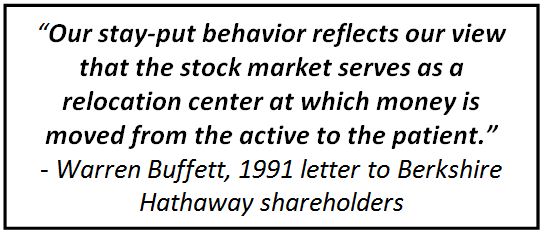The investment community lost one of its more colorful characters earlier this year with the passing of Martin F. Zweig, a Cleveland native and prominent market pundit, author, and chairman of Zweig-DiMenna Associates LLC, a New York investment firm. His death at age 70 also marks the close of another chapter in the long-running debate on the virtues of market timing.
1987 Crash Predicted
Zweig earned a PhD in finance from Michigan State University and later began writing investment newsletters while teaching in New York. Zweig was closely associated with statistical measures of monetary policy and market momentum that he combined into what he called a “super model” to assess market conditions. He transitioned to money management, and in October 1986, he launched the Zweig Fund, a closed-end mutual fund that relied on stock-picking and on his analysis of market trends to adjust its exposure to stocks and bonds.
Zweig was a frequent media contributor and wrote numerous articles for the investment publication Barron’s. Perhaps his finest hour was an appearance on the television show Wall Street Week with Louis Rukeyser. When his host asked him to comment on assertions from other market commentators that the “bull market is dead,” Zweig replied he was expecting a crash but was reluctant to say so publicly. Zweig’s prediction proved eerily accurate: The Dow Jones Industrial Average fell by a staggering 29.2% in chaotic trading the following Monday.
The Zweig Fund, however, emerged relatively unscathed: According to a profile several years later in SmartMoney, the fund had 58% of its assets in cash leading up to the crash, and experienced a loss of only 6.2% on October 19. Traumatized by the unprecedented market break, many investors sought out advisors or analysts who appeared to have avoided the debacle. Zweig’s reputation as a financial expert soared. For years, he was introduced as “the man who called the crash.” The headline of Zweig’s obituary in the Wall Street Journal described him as a “master market timer.”
Zweig’s Long Term Record
The evidence is mixed at best. Zweig’s October 1987 market call was on the money, and the Hulbert Financial Digest once reported that The Zweig Forecast ranked first among market newsletters for risk-adjusted performance. Many investors have discovered, however, that making one or two great predictions is often insufficient to generate above-average long run results—you have to be right over and over again.
It also appears that achieving excess returns with real dollars is more challenging than making prescient forecasts in a newspaper column. The annualized return for the Zweig Fund from inception in October 1986 through January 31, 2013, was 5.84% based on NYSE closing share prices. Over this same time period, the annualized return was 9.84% for the S&P 500 Index and 7.90% for a static mix allocated 30% to the S&P 500 Index and 70% to the Barclays Aggregate Bond Index.
This comparison is not quite fair, as indexes do not include index fund management fees and Zweig’s fund performance does. However, we can assume that including those index fund fees would still leave significant outperformance versus the Zweig fund. Currently the Zweig fund has expenses of 1.13% reflected in performance, whereas these broadly diversified index and passively managed stock and bond funds typically have expenses of less than 0.2%.
Market timers often say their goal is to reduce bear market losses or protect the downside, but as this example shows, it can also be pursued with greater simplicity by adopting a lower equity exposure at all times and ignoring the costs and frustrations associated with constant fiddling.
Neurological Underpinnings
Much research over the last decade has been done on how the human brain responds to uncertainty. A 2005 Caltech study showed that “fear of the economic unknown creates a strong preference for the familiar.” The brain does not like economic unknowns. Instead, for example, we prefer to find a guru that is “in the know,” and we use past performance or seemingly prescient market calls to identify these gurus. Sadly, while doing so may help us temporarily cope with our fear of the unknown, it generally does not work to our financial benefit, as their outperformance does not persist.
Zweig worked diligently to tease out tomorrow’s stock prices from today’s data. But the evidence suggests that even the most dedicated student of market statistics is unlikely to meet with long-run success. You will instead likely be better served to have a plan in place to stress test your fear of the economic unknown—significant market drop or persistent, high inflation for example. If you can withstand the stress test, you will have increased confidence and are more likely remain disciplined throughout the uncertain investing process.
Kevin Kroskey, CFP®, MBA is President of True Wealth Design, an independent investment advisory and financial planning firm that assists individuals and businesses with their overall wealth management, including retirement planning, tax planning and investment management needs. This article adapted with permission from Wes Wellington’s “He Called the Crash.”



